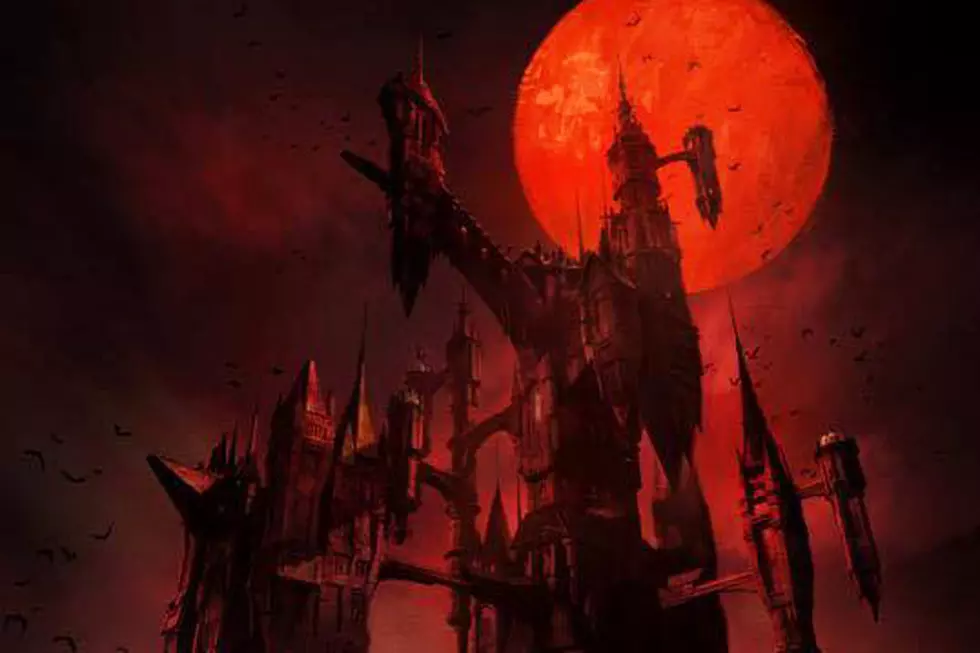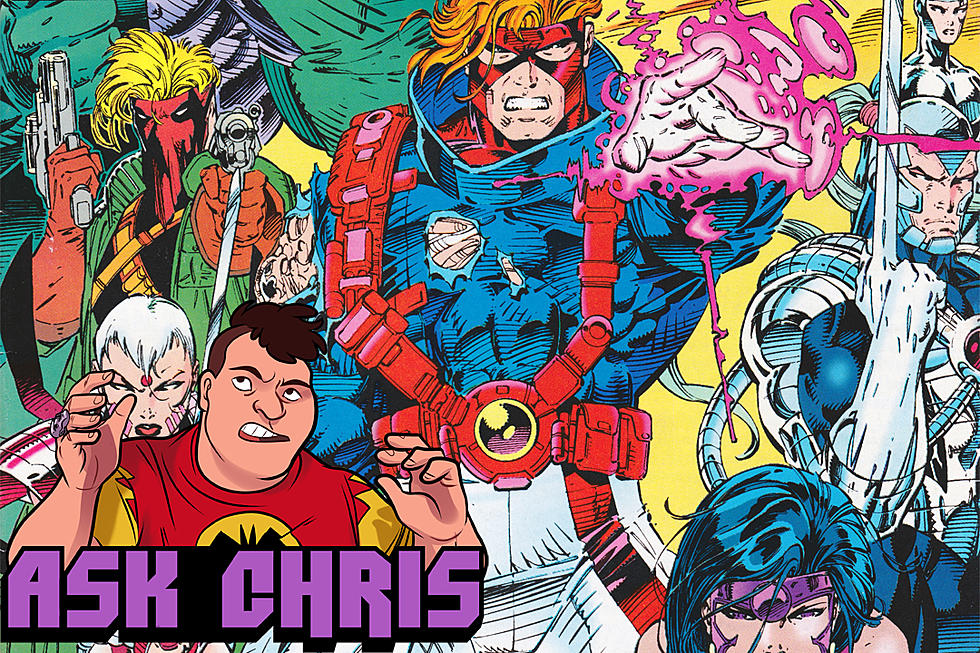
Urban Legend: How Shalvey And Bellaire Cast New Light On Marvel’s ‘Moon Knight’
Marvel’s recent relaunch of Moon Knight saw the white-clad vigilante pare things down to a bare minimum as he stalked the streets by night, taking down gangs, gunmen, and anything else that posed a threat to innocent people. In the hands of Warren Ellis, Declan Shalvey and Jordie Bellaire, the character was reinvented, stepping away from past characterizations to form a new identity. Across just six issues the creative team stamped a brand on the book that may mark how people approach the character and concept from here onward.
From The Dead collects the entirety of Ellis, Shalvey and Bellaire's run on the book. It features a series of deft action sequences, and builds a convincing new world for Moon Knight to walk in, though Ellis's sparse and low-key scripts effectively cede the floor to the artists, allowing penciller Shalvey to create that world and colorist Bellaire to establish the tone. The series is a methodically structured exercise in comics storytelling, with Shalvey excelling in his depiction of a run-down, black and white world of straggling criminals.
That black-and-white is a literal visual motif in the book, thanks to an inspired decision for how to handle colors. Moon Knight’s costume itself – typically depicted in stark white – is here instead rendered without any color whatsoever. The idea has always been that he stands out, distracts, and turns every night-time mission into an act of deliberate self sabotage, but here the absence of any color in his suit gives him an almost mythical sheen. He’s not of the same world that the police and criminals live in – he’s something altogether different and unknown.
There’s a real lack of baggage in Moon Knight, which is emphasized through Shalvey’s artwork. Whilst out of costume, Moon Knight looks gaunt, tired, and human. But within the costume, nothing interests or bothers the character beyond getting through his latest mission and finishing things. Shalvey puts an incredible amount of blank space in many of his panels, particularly in the fight scenes. Moon Knight’s costume at times is just an outline, with no definition – he’s an empty space within a busy confluence of fantasy, noir, action -- whatever genre Ellis’ mood takes the series in. This creates a really distinctive sense of presence, even if that presence seems distant.
When under-detailed in such a way, acts like flicking one of his crescent-shaped weapons come across as quiet and elegant. The pacing in the fight scenes (and particularly in the fifth issue, which is solely a fight scene) is slow and steady, rather than cluttered and vibrant. There’s a sense of momentum that Shalvey initiates on a first panel and follows through to completion by the end of the the page – rather than a series of attacks, Moon Knight picks one target, systematically disables it, and then moves on.
Each act of violence is isolated and kept away from the others, pacing the reader and keeping a sense of stakes with each new attack made. It’s quickly made clear that Moon Knight is an indefatigable force, but the methodical style with which the creative team present his violence is destabilizing. Each page is absorbing, and I found I spent more time on each page than I might usually spend during a superhero fight scene.
Since his time away from superhero comics, Ellis seems to be concerned mostly with telling low concept stories well, rather than reaching for a big premise. The stories collected here are all self-contained, and feature a concise minimum of narrative. Typically, the problem is quickly established, and Moon Knight equally quickly removes them from the picture. An agenda is set, a mission arranged, and the character carries out the retaliating attack. It’s ruthlessly efficient, or hopelessly decompressed, depending on what you’re looking for from the series.
Not one of the opponents that Moon Knight comes up against have any particularly memorable qualities – they exist as motivation for the vigilante rather than as any real challenge. If the original concept for Matt Fraction and David Aja's Hawkeye is that these are the everyday missions the character goes on when not with the Avengers, then you can see Ellis here taking that same concept and unrolling it in his own direction. Moon Knight goes about taking out his enemies with all the drudgery of someone quietly, grimly settled into a day job -- repeating the same process over and over with a blank weariness that’s wiped away his interest in quips, dramatic irony, or theatrics.
That does, however, prove to be about the extent of the characterization present here, as the book frequently struggles to give any of the characters a particular lasting definition. What was an opera or melodrama in the hands of Doug Moench and Bill Sienkiewicz is here just another night of work for the character.
This all being somewhat unimpressive for the single-minded Moon Knight is a good concept in theory, but across the course of a complete trade that does leave the character as a symbol above anything else.
There isn’t a staying power in the issues, beyond the impressive sequencing from the creative team – these aren’t memorable comics, in terms of narrative. The plots are thing and there’s no sense of mystery, surprise, or even continuity present here. There’s a little high concept, a lot of decompression, and the inescapable feeling that at times this is lightweight storytelling masquerading as something deeper.
The sixth issue is the weakest of the collection, focusing on an outside character taking an incredibly predictable route towards self-destruction. It’s here that Ellis goes a little too far in his minimalist approach to the series, with Moon Knight only appearing as an extended cameo in a story about a try-hard aspiring vigilante who wants to supplant him. This other vigilante never reads as a convincing character, and any reader with half an understand of noir can predict exactly what’ll be happening on every beat. After the first few pages, the final page becomes blindingly obvious, but there’s no horror in seeing the character fall into that fate. It’s just another thing that happens.
But as a showcase for the visual storytelling of the creative team, this is magnificent work. Bellaire creates a visual continuity between a series of very different stories; asked to draw a slum or a bizarre dreamscape, she repeats colors and palettes to ensure this all feels like a part of the same world. Moon Knight as a series would be unfathomably weaker if she weren’t able to bring elements of the night-time sequences across into the day-time sequences, and rein in a few areas where writing and art might otherwise have crossed into melodrama. She keeps the storytelling on-point throughout.
Likewise, Shalvey proves himself able to take a concept and slowly construct a complete scene from it. A fight scene in the second issue sees Moon Knight fighting a gunman on a rooftop. This is a scene comics readers will have seen before, but Shalvey’s sequencing frames the fight as a series of actions made and parried. A punch starts in one panel and lands in the second, with the returning blow beginning to find momentum within the same panel. It reminds me, more than anything else, of some of the more celebrated scenes in Uncanny X-Men. Paul Smith’s work in scenes like the infamous Wolverine/Silver Samurai fight scene of Uncanny X-Men #173 seems to be a clear influence on Shalvey.
Moon Knight is a fascinating read in trade. It’s clearly a series more suited to monthly installments than one collection, but From The Dead is still a book with much to recommend it. Ellis proves that he can write a simple comic with a devastating, engrossing efficiency, and Shalvey and Bellaire’s artwork turns each and every moment into something of stark, blinding beauty. Together, they make the series a terrific read.
More From ComicsAlliance

![Jenny Sparks Enters The Scene In Ellis And Davis Hunt’s ‘The Wild Storm’ #3 [Preview]](http://townsquare.media/site/622/files/2017/03/TWS_Cv3_000.png?w=980&q=75)


![All The Image Comics Announcements From Emerald City Comic Con [ECCC ’17]](http://townsquare.media/site/622/files/2017/03/Image-Featured.png?w=980&q=75)




